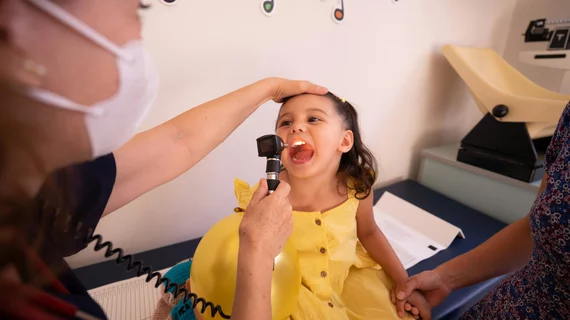10 ways AI, robotics are improving pediatric care in real-world settings
For whatever reason, the grownups seem to get all the attention when talk turns to AI in healthcare. All the kiddos get to do is look on and listen in. Now comes a worthy little effort to balance the seesaw.
It comes from the B2B healthcare services company Vizient, which has published an online magazine covering a number of advances in pediatric care. The publication, Pediatric Tech Watch, gives two full pages to AI. The section summarizes examples of the technology in action at children’s hospitals. Here are 10.
1. At Children’s Hospital Los Angeles, robots are now an integral part of day-to-day logistics, handling various delivery tasks. Within four months, the robots made more than 2,500 deliveries and traveled 132 miles, saving staff 1,620 hours of time.
This automation allows healthcare professionals to focus more on direct patient care rather than logistical tasks.
2. Gillette Children’s Hospital in St. Paul, Minn., is using AI to automate patient intake and scheduling, streamline operations and enhance patient experiences.
This automation has saved staff 118 hours of intake work per week.
3. Children’s Nebraska, a hospital based in Omaha, has made its operating room schedules more efficient using a predictive analytics tools and automation platform to ensure better utilization of critical resources.
The technology has helped the institution boost efficiency and reduce patient wait times while also achieving a 12% increase in overall surgical volumes, a 7% increase in primetime utilization of operating rooms, a 25% improvement in proactive block-time releases and a 45% improvement in proactive block-time requests.
4. UPMC Children’s Hospital of Pittsburgh uses AI algorithms to make it easier to diagnose ear infections.
The institution now has 93% accuracy, compared to 30% to 84% (range due to difficulty in diagnosis) accuracy for clinicians. These developments not only improve care delivery but also ensure better health outcomes for young patients.
5. In Ohio, Nationwide Children’s Hospital in Columbus utilizes a machine learning tool that flags pediatric patients at risk of deterioration of a worsening condition, allowing for timely interventions that have notably reduced deterioration rates.
Pilot results over 18 months showed a 77% reduction in deterioration events.
6. Researchers at Cincinnati Children’s Hospital Medical Center have harnessed AI to refine emergency department screenings for clinical trial participants.
This AI automation has reduced patient screening time by 34% compared to manual methods. The technology has improved enrollment rates too, facilitating more efficient research processes through the analysis of data and unstructured narratives.
7. The National Human Genome Research Institute in Bethesda, Md., is leveraging AI to aid pediatric residents in identifying symptoms of rare diseases through AI-generated images.
This initiative helps bridge the gap in real-world data, providing residents with the tools needed to improve recognition.
8. Children’s Hospital Colorado is exploring AI’s potential to identify patients at risk of suicide ideation amid rising anxiety and depression among children and adolescents.
This proactive approach aims to provide interventions to help reduce risk.
9. Salt Lake City-based Intermountain Healthcare uses an in-house AI platform to analyze systemwide data to help standardize equipment procurement for surgeries.
This innovation saved $90 million over a four-year timeframe while reducing postoperative complications.
10. In Georgia, Children’s Healthcare of Atlanta Arthur M. Blank Hospital recently opened with a fleet of 90 robots and 60 facility- and supply-chain-related technical systems.
CIO Jeremy Meller in Healthcare IT News: ‘We have a long-term investment in predictive analytics but are more recently looking at how generative AI can be used in meaningful and safe ways.’
Peruse the magazine in flipbook format here.

